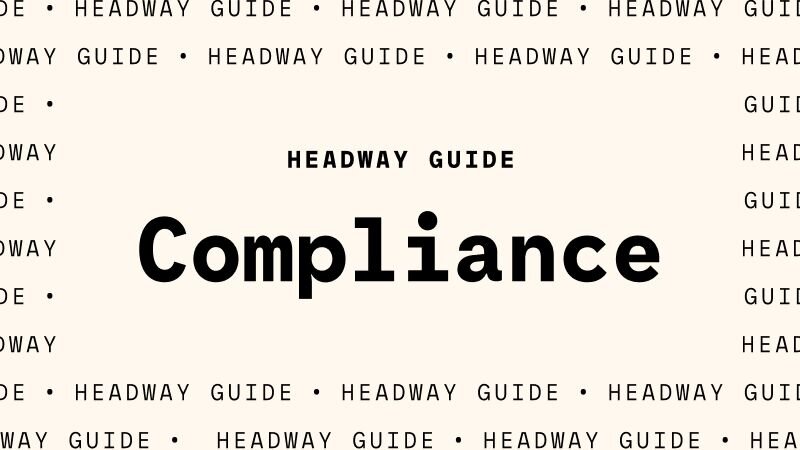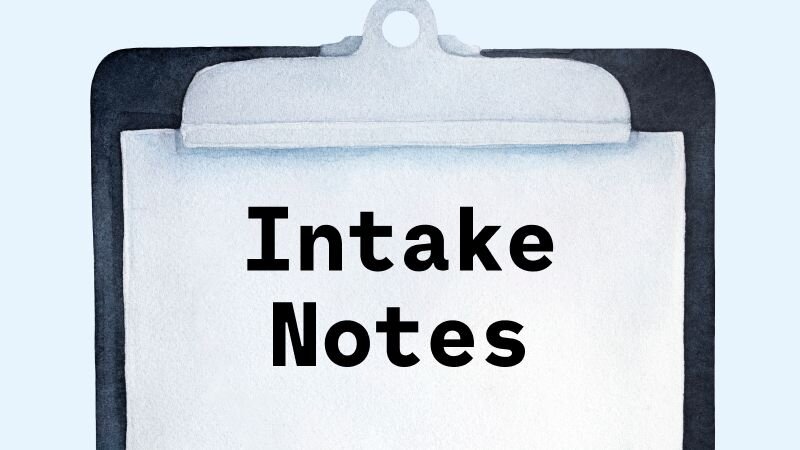
Compliance— a Headway Guide
Navigating compliance can be time-consuming and stressful. We’re committed to changing that.

Whenever you want to change the goal of your therapy care, or the path you want to take with the client to reach that goal, you’ll want to document a treatment plan.
A treatment plan is like a map: If your diagnosis is a reflection of where the client is today, the treatment plan outlines the route to their destination (or goal).
One important thing to remember about treatment plans is that they can change as your client’s needs evolve and change. For example, you might have a plan to treat your client’s depression — but if they start a new job and begin to present more anxiety instead, you may need to change your course of treatment.
Whenever you want to change the goal of your therapy care, or the path you want to take with the client to reach that goal, you’ll want to document a treatment plan.
When you’re a Headway provider, you get complimentary access to built-in documentation templates designed to make your note-taking fast, easy, and compliant.
Learn more about Headway’s EHR features and enhanced rates today; and start seeing insurance clients in less than 30 days.
The purpose of a treatment plan is to understand our client’s areas of struggle, and to collaboratively guide patients towards their mental health goals. It’s typically completed within your first few sessions with a client.
Treatment plans are not just an insurance requirement, they’re the glue to the entire therapeutic process. You’ll cite the goals and objectives from your treatment plan in the progress notes you document after each session.
You can document a new treatment plan anytime your goals with the client change. But a good rule of thumb is to address or update your treatment plan every 3 to 6 months, in collaboration with your client.
If you're a psychiatrist or nurse practitioner seeing a client for therapy alone, you are required to complete a treatment plan at least twice a year.
A complete patient chart contains three core pieces of clinical documentation: an intake assessment, treatment plan, and progress notes.
Think of these as the “golden thread”: Your intake note should inform your treatment plan, and your treatment plan goals and objectives should be reflected in each progress note.
Here are the key details of the different types of documentation:
Clinical documentation is a staple of any mental healthcare practice — it’s used to clarify the purpose of your sessions, justify the billing code used, and demonstrate a good picture of the patient’s current mental state.
These standards are outlined by the American Medical Association (AMA), Centers for Medicare and Medicaid Services (CMS), National Committee for Quality Assurance (NCQA), commercial insurers, and other regulatory agencies.
Your license or a particular insurer may have even stricter requirements than those set forth here.
In order to fulfill the needs of insurance carriers, it’s important that your treatment plan documentation contains the following requirements:
These easy-to-note facts are required for all documentation, including your treatment plan:
These can be short descriptions of your diagnosis of the patient, such as an ICD-10 code.
Document your client’s current presenting issues, to add more background to their diagnosis.
A brief statement of your suggested method of treatment. This is where you might document your session cadence or a recommendation for medication.
This is where you detail the goals you have for your patient: How do they want to feel or behave with successful therapeutic intervention? This will likely include elements like:
You may be more familiar with words like intervention or method — the language isn’t as important as ensuring that there is a goal, an action step, and type of evidence based practice noted in the treatment plan.
Consider using the SMART framework to ensure your goals are compliant with insurance expectations: Your goals should be Specific, Measurable, Achievable, Relevant, and Time-Bound.
The treatment plan is an agreement between you and your client, so you’ll want to document presence, awareness and consent from both parties.
It depends. If you are conducting face to face therapy, yes, your client needs to physically sign their treatment plan. If you are virtual/telehealth, they just need to verbally agree to it. Then, you document in your note that the patient is aware and agrees to the treatment plan.
Physicians and nurse practitioners do not need a patient signature on treatment plans.
Updating your treatment plan is pretty simple: You would update the goal, the objective, or the modality — whatever part of the treatment plan needs updating — then sign and date it, and have the patient sign and date it (or verbally agree, see above).
Here’s an example of a treatment plan that meets most insurance carriers’ expectations for this type of clinical documentation.
Notice how it contains the recommended session and client details, background on the client’s diagnosis and issues, and SMART goals for treatment.
Client Name: John Public
DOB: 1/1/1991
Age: 32
Date: 1/11/2023
Exact start time and end time: 1:03 pm–1:55 pm: 52 mins
Session location: Serenity Behavioral Health Center, 123 Serenity Street, Hopeville, TX 56789
Diagnosis: (F41.1) Generalized anxiety disorder
Problem 1: Anxiety in Work Settings: John experiences significant anxiety that manifests as racing thoughts, restlessness, and difficulty sleeping. This anxiety has escalated post-COVID pandemic and affects his ability to maintain consistent employment. He describes being "high strung" and suffers from "Sunday Scaries" that can lead to anxiety attacks, impacting his job stability and ability to enjoy free time.
Goal: Within 120 days or 15 therapy sessions, the client will develop skills to manage anxiety effectively, allowing him to maintain employment and enjoy leisure without the need for withdrawal due to anxiety.
Objective 1: Client will demonstrate an increased understanding of ACT principles and apply them to reduce work-related anxiety within 60 days.
Objective 2: Client will learn cognitive restructuring techniques to identify and reframe unhelpful thought patterns related to work within 120 days.
Client Signature and Date
John Public electronically signed 1/11/23
Clinician Signature and Date
Susan Q. Practitioner, LCSW, 1/10/2023
This document is intended for educational purposes only. Examples are for purposes of illustration only. It is designed to facilitate compliance with payer requirements and applicable law, but please note that the applicable laws and requirements vary from payer to payer and state to state. Please check with your legal counsel or state licensing board for specific requirements.
There is no CPT code associated specifically with treatment plans. If you’re conducting a session with the goal of completing a treatment plan with your client, use the associated time-based therapy code:
For talk therapists:
For psychiatry:
If you’re using a psychotherapy code to bill the session, you also need to document a progress note. Your progress note can share details about how you worked with the client to establish goals and objectives for your treatment plan.
It’s important to use the code that most accurately reflects the time you spent with the patient to treat their condition, and ensure that documentation for the session supports the chosen code.
Documentation of relevant aspects of client care, including documentation of medical necessity, should ideally be completed within 24 hours of visit, and no later than 72 hours.

Navigating compliance can be time-consuming and stressful. We’re committed to changing that.

The intake assessment is your chance to get a deep understanding of your patient — and maybe connect some elements from their journey that they wouldn’t connect themselves.

Progress notes are the core piece of documentation a mental health care provider should write after each session with a client, but it’s more than just a record of what happened in the session.